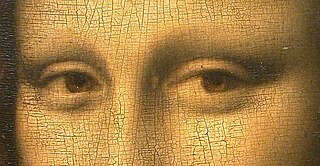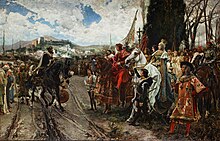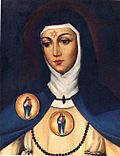
The 1490s decade ran from January 1, 1490, to December 31, 1499.

Year 1503 (MDIII) was a common year starting on Sunday of the Julian calendar.
Year 1498 (MCDXCVIII) was a common year starting on Monday of the Julian calendar, the 1498th year of the Common Era (CE) and Anno Domini (AD) designations, the 498th year of the 2nd millennium, the 98th year of the 15th century, and the 9th and pre-final year of the 1490s decade.

Year 1519 (MDXIX) was a common year starting on Saturday of the Julian calendar, the 1519th year of the Common Era (CE) and Anno Domini (AD) designations, the 519th year of the 2nd millennium, the 19th year of the 16th century, and the 10th and last year of the 1510s decade.
Year 1478 (MCDLXXVIII) was a common year starting on Thursday of the Julian calendar.

Year 1493 (MCDXCIII) was a common year starting on Tuesday of the Julian calendar.
Year 1496 (MCDXCVI) was a leap year starting on Friday of the Julian calendar.
Year 1494 (MCDXCIV) was a common year starting on Wednesday of the Julian calendar.
Year 1482 (MCDLXXXII) was a common year starting on Tuesday of the Julian calendar.

The Catholic Monarchs were Queen Isabella I of Castile and King Ferdinand II of Aragon, whose marriage and joint rule marked the de facto unification of Spain. They were both from the House of Trastámara and were second cousins, being both descended from John I of Castile; to remove the obstacle that this consanguinity would otherwise have posed to their marriage under canon law, they were given a papal dispensation by Sixtus IV. They married on October 19, 1469, in the city of Valladolid; Isabella was 18 years old and Ferdinand a year younger. It is generally accepted by most scholars that the unification of Spain can essentially be traced back to the marriage of Ferdinand and Isabella. Their reign was called by W.H. Prescott "the most glorious epoch in the annals of Spain".

Bartholomew Columbus was an Italian explorer from the Republic of Genoa and the younger brother of Christopher Columbus.

The Nasrid dynasty was an Arab dynasty that ruled the Emirate of Granada from 1232 to 1492. It was the last Muslim dynasty in the Iberian Peninsula. Twenty-three sultans ruled Granada from the founding of the dynasty in 1232 by Muhammad I until 2 January 1492, when Muhammad XII surrendered all lands to Isabella I of Castile. Today, the most visible evidence of the Nasrid dynasty is the Alhambra palace complex built under their reign.

The Crown of Castile was a medieval polity in the Iberian Peninsula that formed in 1230 as a result of the third and definitive union of the crowns and, some decades later, the parliaments of the kingdoms of Castile and León upon the accession of the then Castilian king, Ferdinand III, to the vacant Leonese throne. It continued to exist as a separate entity after the personal union in 1469 of the crowns of Castile and Aragon with the marriage of the Catholic Monarchs up to the promulgation of the Nueva Planta decrees by Philip V in 1715.

Tanto monta, monta tanto, Isabel como Fernando or simply Tanto monta, monta tanto was the alleged motto of a prenuptial agreement made by the Spanish Catholic Monarchs Isabella I of Castile and Ferdinand II of Aragon. During their joint reign they did in fact support each other effectively in accordance with their motto of equality. Still, the wording "Tanto monta, monta tanto, Isabel como Fernando" is actually a popular saying invented many centuries later, not the real motto. Besides, and contrary to popular belief, Tanto monta was only the motto of King Ferdinand of Aragon, and never used by Isabella.

Ferdinand II was King of Aragon from 1479 until his death in 1516. As the husband of Queen Isabella I of Castile, he was also King of Castile from 1475 to 1504. He reigned jointly with Isabella over a dynastically unified Spain; together they are known as the Catholic Monarchs. Ferdinand is considered the de facto first king of Spain, and was described as such during his reign, even though, legally, Castile and Aragon remained two separate kingdoms until they were formally united by the Nueva Planta decrees issued between 1707 and 1716.

The Granada War was a series of military campaigns between 1482 and 1492 during the reign of the Catholic Monarchs, Isabella I of Castile and Ferdinand II of Aragon, against the Nasrid dynasty's Emirate of Granada. It ended with the defeat of Granada and its annexation by Castile, ending the last remnant of Islamic rule on the Iberian peninsula.

The Capitulations of Santa Fe between Christopher Columbus and the Catholic Monarchs, Queen Isabella I of Castile and King Ferdinand II of Aragon, were signed in Santa Fe, Granada on April 17, 1492. They granted Columbus the titles of admiral of the Ocean Sea, viceroy, and governor-general and the honorific don, and also the tenth part of all riches to be obtained from his intended voyage. The document followed a standard form in 15th-century Castile with specific points arranged in chapters (capítulos).

Isabella I, also called Isabella the Catholic, was Queen of Castile and León from 1474 until her death in 1504. She was also Queen of Aragon from 1479 until her death as the wife of King Ferdinand II. Reigning together over a dynastically unified Spain, Isabella and Ferdinand are known as the Catholic Monarchs.

Dudum siquidem was a papal bull issued by Pope Alexander VI on 26 September 1493, one of the Bulls of Donation addressed to the Catholic Monarchs Isabella I of Castile and Ferdinand II of Aragon which supplemented the bull Inter caetera and purported to grant to them "all islands and mainlands whatsoever, found and to be found, discovered and to be discovered, that are or may be or may seem to be in the route of navigation or travel towards the west or south, whether they be in western parts, or in the regions of the south and east and of India".

Christopher Columbus's journal (Diario) is a diary and logbook written by Christopher Columbus about his first voyage. The journal covers events from 3 August 1492, when Columbus departed from Palos de la Frontera, to 15 March 1493 and includes a prologue addressing the sovereigns. Several contemporary references confirm Columbus kept a journal of his voyage as a daily record of events and as evidence for the Catholic Monarchs. Upon his return to Spain in the spring of 1493, Columbus presented the journal to Isabella I of Castile. She had it copied, retained the original, and gave the copy to Columbus before his second voyage. The whereabouts of the original Spanish text have been unknown since 1504.





















